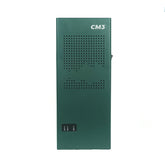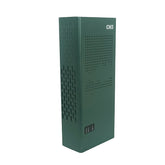How is drone countermeasures implemented?
In recent years, with the continuous development of the drone industry, the number of drone users is also increasing. At present, various accidents with potential safety hazards of drones often occur, so the supervision of drone interference and drones is still very urgent. In order to avoid more accidents, the implementation of slow and small countermeasures against drones is also increasing, and the countermeasures against drones are becoming more and more rigorous to avoid some mistakes. At present, for the methods of UAV countermeasures and supervision, in addition to the laws and regulations on the regulation of UAVs by the government, there is also the use of scientific and technological means to attack and sanction UAVs, such as: slow and small countermeasures, unmanned Man-machine countermeasures, drone jamming, etc.
UAV countermeasures refer to the use of various technologies and equipment to interfere, destroy or prevent the normal operation and activities of UAVs. Here are some common countermeasures against drones:
Signal interference: Use drone jammer equipment to interfere with the control signal of the drone, causing it to lose control or fail to work properly.

Interceptors: Use drone interceptors to jam or capture drones, either through physical collisions or cyber attacks.
Lasers: Use lasers to strike drones, destroying their electronic systems and mechanical structures through high-energy laser beams, making them unable to continue to operate.
Missile Defense System: Use the missile defense system to track and destroy drones by launching anti-drone missiles.
Shooting: Use guns and other weapons to shoot and attack drones. This method needs to be carried out under appropriate conditions and safety factors need to be considered.
It should be noted that any drone countermeasure method must comply with local laws and regulations and must be carried out under safe conditions. In addition, different UAV countermeasures may have different impacts and risks on the surrounding environment or other equipment, so it is necessary to comprehensively consider various factors and carefully select the appropriate countermeasure.
There are also many places that are disturbed by some illegal drone operations. In order to solve these various problems, many places have also implemented some methods. For example, setting up no-air areas, that is, restricting the use of drones in these areas, has also strengthened the management of drones, and also avoided some accidents. The use of technical prevention is based on the frequency band used by the drone and the positioning assistance of the drone's GPS system to carry out low-slow and small countermeasures. The low-slow and small countermeasures mainly use UAV jamming to interfere with the connection between the UAV and the operator to carry out UAV countermeasures. When the UAV is in use, the signal frequency bands need to be transmitted and received each other. In the case of low-speed countermeasures, the signal is used to interfere with the communication between the UAV and the operator. The UAV cannot receive information, nor can it do the following The command can only be forced to return or hover, etc., and it cannot be controlled.













